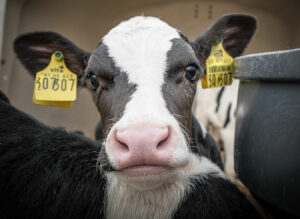Maria Villagrasa & Nuria Garcia
Bovine anaplasmosis is a hemolytic disease of cattle caused by the rickettsia Anaplasma marginale transmitted by arthropods. In the US, the presence of anaplasmosis has been reported in almost all states. This wide distribution may be due to increased livestock transport and, therefore, the opportunity for mechanical transmission by persistently infected asymptomatic livestock.
Bovine anaplasmosis causes significant economic losses in most countries, mainly due to its high morbidity and mortality in susceptible herds.
Control measures against anaplasmosis
Disease control measures have not changed much over the past few decades. They vary by geographic location and include arthropod control through acaricides, antibiotic administration, and vaccination.
Arthropod control is impractical in many areas and can only partially prevent the transmission of A. marginale, which is caused by both mechanical transmission of infected blood through insects and fomites, and by biological transmission through ticks.
The use of drugs, probably the most frequent approach to prevent anaplasmosis in the US more often than in other areas of the world, is expensive and relies on the use of antibiotics which carry the risk of resistance.
Vaccination to control bovine anaplasmosis is another alternative through two main types: dead and live vaccines. Both types are based on the use of A. marginale from infected bovine erythrocytes and inducing protective immunity that reduces or prevents clinical disease; they do not however prevent livestock from becoming persistently infected with A. marginale. Carrier animals subsequently serve as local reservoirs for disease transmission.
An experimental vaccine to control this disease has been developed in recent years but it requires multiple injections and has not been validated through research. Vaccination strategies are thus urgently needed to control anaplasmosis and help farmers fight this disease.
A group of researchers (Curtis et al., 2020) has developed a new method of vaccination using a single-dose subcutaneous implant that provides long-term immunity against anaplasmosis infections by releasing the vaccine over a more prolonged time.
Twelve Holstein calves, 11 to 12 weeks of age, were given the new Anaplasma marginale vaccine. The vaccine consisted of a reservoir with a slow-release biodegradable polyanhydride rod to stimulate the immune response, and a platform for sustained release of the antigen.
Six calves received two vaccines containing a combination of two different adjuvants, Diethylaminoethanol (DEAE)-dextran and Quil-A® adjuvant (Group A) administered through a subcutaneous ear implant. The remaining six calves received two vaccines containing the same adjuvant (DEAE-Dextran or Quil-A) (Group B). Twenty-one months after vaccination, an isolate of A. marginale was administered to infect the animals, representing day 0 of infection.
The most effective vaccine had more than one adjuvant
The effect on the treatment group with the vaccine alone was examined with no differences observed when comparing bacteria in blood or body temperature. The animals receiving the vaccine with the combination of adjuvants had a highest hematocrit on the 35th day after infection compared to those receiving the single adjuvant. The peak bacteria in blood coincided with the highest hematocrit as well. This result shows that calves had reduced clinical signs of anaplasmosis when the vaccine antigen was administered with a combination of adjuvants rather than a single adjuvant.
These results are consistent with previous studies that highlight the value of using multiple adjuvants to confer immunity, and reduce the need for antibiotic intervention in infected animals. This may be because there is a more ample array of immune cells stimulated by multiple adjuvants.
Assuming the effectiveness of the vaccine is based on a lower need for antimicrobial therapy and greater survival, the authors claim that the use of multiple adjuvants in the preparation of the vaccine could limit the severity of the disease. While caution should be exercised considering the small sample size, it should be noted that 100% (6/6) of the animals vaccinated with a single adjuvant required antibiotic intervention during the study, compared to only 33% (2/6) of animals vaccinated with the combination of adjuvants.
In summary, this study demonstrated the feasibility of anaplasmosis vaccination administered in a single subcutaneous ear implant 21 months before the disease challenge, which could help make disease control more accessible.
Reference
Andrew K. Curtis, Kathryn E. Reif, Michael D. Kleinhenz, Miriam S. Martin, Brandt Skinner, Sean M. Kelly, Douglas E. Jones, Emily J. Reppert, Shawnee R. Montgomery, Balaji Narasimhan, Tippawan Anantatat, Majid Jaberi-Douraki, and Johann F. Coetzee. Development of a subcutaneous ear implant to deliver an anaplasmosis vaccine to dairy steers. Journal of Animal Science, 2020, Vol. 98, No. 6, 1–6.
© 2020 Dairy Knowledge Center. All Rights Reserved.











